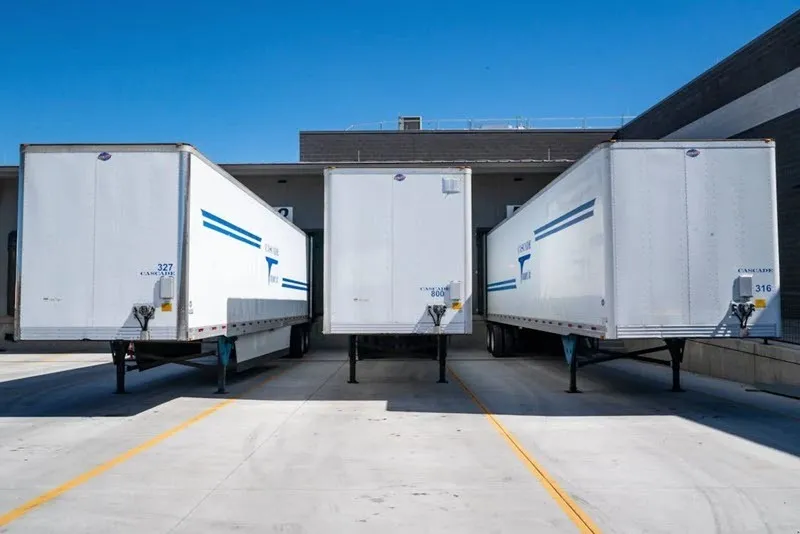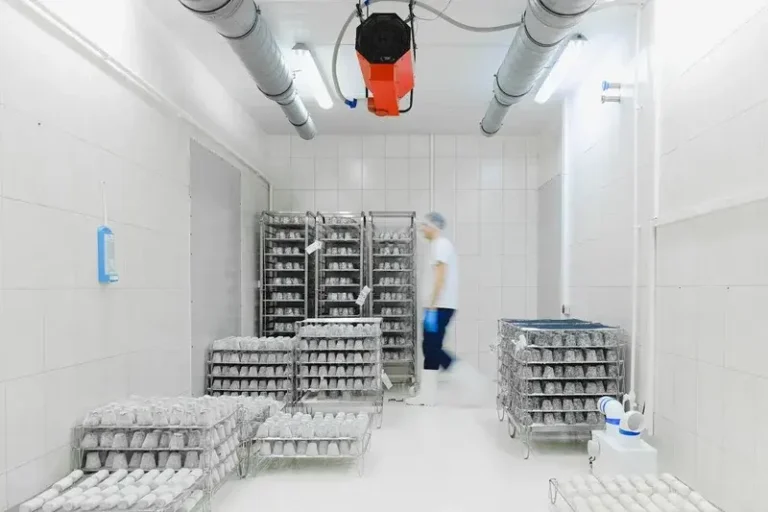Fulfillment Center vs Distribution Center: Understanding the Supply Chain Ecosystem

Last updated on March 5, 2025

In today’s complex supply chain landscape, terminology can sometimes blur together, leaving business owners and logistics professionals confused about the best solutions for their operations. Two terms that are often used interchangeably, yet serve distinctly different purposes, are fulfillment centers and distribution centers. This article explores their definitions, differences, relationships, and how they fit into the broader supply chain ecosystem alongside traditional warehouses.
What is a Fulfillment Center
A fulfillment center (FC) is a specialized facility primarily focused on B2C (business-to-consumer) operations. These centers receive, process, pack, and ship orders directly to end consumers. The key distinguishing feature of fulfillment centers is their consumer-oriented approach. They are designed to handle individual orders rather than bulk shipments, with workflows optimized for picking single items from inventory, packaging them appropriately for individual consumers, and shipping them through parcel carriers.
A fulfillment warehouse, often managed by third-party logistics providers, operates similarly to a fulfillment center, focusing on efficiently shipping goods, particularly for ecommerce and retail.
The primary goal of a fulfillment center is speed and accuracy in getting products directly into customers’ hands. They typically store inventory for relatively short periods; just long enough to facilitate the order fulfillment process. Modern fulfillment centers often feature advanced automation systems for sorting, picking, and packing to meet the growing demands of ecommerce.
Benefits for Ecommerce Businesses
Fulfillment centers offer a multitude of benefits for ecommerce businesses, making them a necessary component of modern online retail operations. These benefits include:
- Speed and Efficiency in Fulfilling Customer Orders: Fulfillment centers are designed to process individual customer orders quickly and accurately. With advanced automation and streamlined workflows, these centers can pick, pack, and ship orders with remarkable speed, meeting the high expectations of today’s consumers for fast delivery.
- Scalability to Accommodate Fluctuating Order Volumes: Ecommerce businesses often experience varying order volumes due to seasonal trends, promotions, and market fluctuations. Fulfillment centers provide the scalability needed to handle these changes, allowing businesses to ramp up operations during peak periods and scale down during slower times without compromising efficiency.
- Focus on Customer Experience: By outsourcing order fulfillment to specialized centers, ecommerce businesses can focus on their core activities, such as product development, marketing, and customer service. Fulfillment centers also offer value-added services like gift wrapping, personalized notes, and custom packaging, enhancing the overall customer experience and fostering brand loyalty.
- Access to Advanced Technology and Automation: Fulfillment centers leverage cutting-edge technology and automation to optimize the entire order fulfillment process. From robotic picking systems to real-time inventory tracking, these technological advancements enable businesses to stay competitive in the fast-paced ecommerce market.
- Cost Savings through Reduced Shipping Costs and Improved Inventory Management: By strategically locating fulfillment centers near customer population centers, businesses can reduce shipping costs and transit times. Additionally, advanced inventory management systems help minimize stockouts and overstock situations, leading to more efficient use of resources and cost savings.
In summary, fulfillment centers provide ecommerce businesses with the tools and capabilities needed to meet customer demands, streamline operations, and achieve sustainable growth in a competitive market.
Let AI Optimize Your Shipping and Boost Profits
Cahoot.ai software selects the best shipping option for every order—saving you time and money automatically. No Human Required.
See AI in ActionWhat is a Distribution Center
Distribution centers (DC), by contrast, serve primarily as waypoints in the supply chain. Distribution centers serve as essential hubs that receive and store inventory, which is then allocated to fulfillment centers for order processing. They focus on B2B (business-to-business) operations, acting as intermediaries that receive bulk shipments from manufacturers or suppliers and then redistribute these goods to other business locations such as retail stores, smaller regional distribution centers, or sometimes fulfillment centers.
The key function of a distribution center is short-term storage and efficient product flow. Inventory typically moves through a distribution center quickly, usually within days or weeks, as these facilities are designed for high throughput rather than long-term storage. They handle merchandise in larger quantities (pallets or cases rather than individual items) and focus on efficient cross-docking, sorting, and redistribution operations.
In essence, distribution centers act as strategic hubs within the supply chain, ensuring that products are efficiently moved from one point to another. This makes them crucial for businesses involved in wholesale distribution and retail replenishment, as they help maintain a steady flow of inventory to meet market demands. By serving as central points for receiving and storing inventory, distribution centers enable businesses to manage their supply chains more effectively, ensuring that products are available where and when they are needed.
Benefits for Ecommerce Businesses
Distribution centers are equipped with several key features that enable them to manage inventory efficiently and distribute products effectively. These features include:
- Inventory Management and Storage Capabilities: Distribution centers are designed to manage inventory levels meticulously and store products in an organized manner. Advanced inventory management systems are often employed to track stock levels, monitor product movement, and ensure that inventory is readily available for redistribution.
- Order Fulfillment to Various Locations: One of the primary functions of a distribution center is to fulfill orders to various locations, including retail stores, wholesalers, or other fulfillment centers. This involves picking, packing, and shipping products in bulk, ensuring that each destination receives the correct quantities of inventory.
- Cross-Docking and Consolidation Capabilities: Distribution centers often utilize cross-docking and consolidation techniques to minimize handling and storage costs. Cross-docking involves transferring products directly from inbound to outbound transportation with minimal storage time, while consolidation combines smaller shipments into larger ones to optimize transportation efficiency and reduce transit times.
- Partnerships with Shipping Carriers: To ensure timely and cost-effective delivery, distribution centers often establish partnerships with various shipping carriers. These partnerships enable distribution centers to negotiate favorable shipping rates, streamline logistics operations, and ensure that products reach their destinations promptly.
By incorporating these features, distribution centers can effectively manage the flow of inventory, reduce operational costs, and enhance overall supply chain efficiency.
What is a Warehouse
Warehouses represent the traditional model of storage facilities, designed for longer-term inventory storage. Unlike fulfillment and distribution centers that prioritize movement, warehouses are designed for longer-term inventory storage, often holding goods for months or even years. They serve as repositories for raw materials, seasonal inventory, safety stock, or slow-moving products.
Not all warehouses are fulfillment centers or distribution centers. Not all fulfillment centers or distribution centers are warehouses.
The primary function of a warehouse is secure, organized storage rather than rapid processing or shipping. While modern warehouses have evolved to incorporate more sophisticated inventory management systems, their fundamental purpose remains focused on storage capacity and organization rather than rapid throughput.
ShipStation vs. Cahoot: 21x Faster, Real Results
Get the inside scoop on how a leading merchant switched from ShipStation to Cahoot—and what happened next. See it to believe it!
See the 21x DifferenceFulfillment Centers and Distribution Centers Complement Each Other
Rather than competing entities, fulfillment centers and distribution centers typically operate as complementary components within a sophisticated supply chain network. Many businesses rely on a third party logistics company (3PL) to manage the operations of both fulfillment centers and distribution centers, ensuring efficient movement of goods from manufacturers to consumers. In many large operations, distribution centers feed fulfillment centers, creating a logical flow of goods from manufacturer to consumer.
In this relationship, distribution centers typically receive bulk shipments from manufacturers, then break these large shipments down into smaller quantities that are sent to various fulfillment centers based on regional demand forecasts. The fulfillment centers positioned closer to end consumers handle the final mile of the delivery process.
This collaboration creates a streamlined supply chain that balances efficiency with customer satisfaction. Distribution centers provide the economies of scale needed for cost-effective inventory movement, while fulfillment centers deliver the speed and personalization that today’s consumers demand.
How Warehouses Fit into the FC and DC Ecosystem
Traditional warehouses serve a different but equally important role in the supply chain ecosystem. While fulfillment and distribution centers focus on movement and flow, warehouses provide stability and security through longer-term storage capabilities.
Warehouses often feed both distribution and fulfillment centers with inventory as needed, providing essential warehouse space for excess inventory during low-demand periods. They store excess inventory during low-demand periods, hold seasonal merchandise until the appropriate selling season, maintain safety stock to buffer against supply chain disruptions, and house slow-moving items that aren’t needed in high-velocity centers.
In a well-designed supply chain, warehouses act as the foundation that supports the more dynamic operations of distribution and fulfillment centers. They provide the buffer needed to maintain consistent inventory availability despite fluctuations in demand or supply chain disruptions.
How to Choose the Right Facilities
Selecting the appropriate mix of fulfillment centers, distribution centers, and warehouses depends on several factors specific to your business model and operations.
Using Fulfillment Centers Exclusively
Businesses that rely solely on fulfillment centers gain significant advantages in direct-to-consumer operations. These facilities excel at processing individual customer orders with speed and precision, enabling faster delivery times that meet the growing expectations of today’s consumers. These facilities also provide pack fulfillment services, which include generating pick lists, collecting items, checking orders for accuracy, and packing them for shipping. The specialized handling capabilities of fulfillment centers ensure that each order receives proper attention, from accurate picking to appropriate packaging, enhancing overall customer satisfaction.
Another major benefit of fulfillment centers is their ability to offer value-added services that enhance the customer experience. From gift wrapping and personalized notes to custom packaging and subscription box assembly, these facilities can implement services that create memorable unboxing experiences and strengthen brand loyalty. This consumer-focused approach makes fulfillment centers particularly well-suited for ecommerce operations, where the physical delivery represents a critical touchpoint in the customer journey.
However, relying exclusively on fulfillment centers comes with several drawbacks that businesses must consider. These facilities typically incur higher operational costs per unit handled compared to other supply chain facilities. The labor-intensive nature of individual order processing, combined with the premium locations needed for rapid delivery, contributes to increased expenses that can impact profit margins. Additionally, fulfillment centers are not designed for efficient bulk storage, making them less cost-effective for inventory that isn’t actively moving to consumers.
Businesses using only fulfillment centers may also struggle with limited capacity for long-term inventory holding. These facilities prioritize throughput over storage, making them ill-suited for housing seasonal merchandise, safety stock, or slow-moving items. For nationwide operations, a fulfillment center-only approach often necessitates establishing multiple facilities across different regions to achieve acceptable delivery timeframes, further increasing operational complexity and capital requirements.
Cut Costs with the Smartest Shipping On the Market
Guranteed Savings on EVERY shipment with Cahoot's AI-powered rate shopping and humanless label generation. Even for your complex orders.
Cut Costs TodayUsing Distribution Centers Exclusively
Organizations that operate exclusively with distribution centers serve benefit from highly efficient handling of bulk shipments. These facilities excel at receiving, sorting, and redistributing large quantities of merchandise, creating significant economies of scale in inventory movement. Their focus on high-volume handling makes them particularly cost-effective for businesses that primarily serve other businesses rather than individual consumers.
The strategic positioning of distribution centers enables efficient regional distribution networks that can minimize transportation costs while maximizing coverage. By placing these facilities near major transportation hubs or at crossroads between manufacturing sources and market destinations, companies can optimize their outbound logistics operations. This creates better economies of scale for transportation, allowing businesses to negotiate more favorable carrier rates and reduce per-unit shipping costs through consolidated freight movements.
Distribution centers provide an ideal infrastructure for retail store supply chains, efficiently breaking down bulk shipments into store-specific allocations that can be delivered according to retail replenishment schedules. Their ability to process large volumes of merchandise makes them well-suited for operations where goods flow to predetermined business locations rather than individual households.
Despite these advantages, a distribution center-only approach presents significant limitations for many modern businesses. These facilities are not optimized for individual order fulfillment, lacking the specialized processes and systems needed for efficient picking, packing, and shipping of direct-to-consumer orders. Their focus on bulk handling makes them less suitable for the personalized, parcel-based shipping that dominates ecommerce operations.
Businesses relying solely on distribution centers for ecommerce operations often encounter additional handling steps that increase both costs and fulfillment timelines. Without dedicated fulfillment capabilities, companies frequently need to partner with separate fulfillment services or carriers to bridge the gap between their distribution operations and individual consumer deliveries, adding complexity and reducing control over the customer experience.
Using Warehouses Exclusively
Companies that utilize storage facilities as their sole supply chain facility enjoy substantial benefits for long-term storage operations. These facilities offer lower operational costs for inventory that doesn’t require frequent handling, making them cost-effective solutions for businesses with stable product lines or significant safety stock requirements. Their focus on storage rather than processing provides the capacity to house large quantities of inventory efficiently, utilizing vertical space and dense storage solutions.
Warehouses provide ideal environments for maintaining significant safety stock levels to buffer against supply chain disruptions or demand fluctuations. Their long-term storage orientation makes them particularly well-suited for seasonal or slow-moving inventory that would otherwise consume valuable space in more dynamic facilities. Many warehouses can be established in less premium locations away from urban centers, resulting in lower real estate costs and reduced overhead expenses compared to fulfillment or distribution centers.
However, a warehouse-only approach creates substantial challenges for serving today’s consumers effectively. These facilities are not designed for rapid order processing, lacking the workflows and systems needed to efficiently fulfill individual customer orders. Without specialized consumer packaging capabilities, warehouses struggle to provide the presentation quality and unboxing experience that modern shoppers expect from online purchases.
Warehouses are typically positioned farther from end consumers than fulfillment centers, increasing delivery timelines and transportation costs for direct-to-consumer shipments. The storage-focused nature of these facilities often requires more labor to transition goods from storage mode to shipping mode, creating operational inefficiencies when handling ecommerce orders. For businesses serving individual consumers, these limitations can significantly impact customer satisfaction and competitive positioning.
Integrating All Three Facilities
Organizations that successfully integrate fulfillment centers, distribution centers, and warehouses into a cohesive network gain maximum flexibility across all supply chain needs. This comprehensive approach allows businesses to leverage the strengths of each facility type while mitigating their individual limitations. By designating specific functions to the facilities best suited to perform them, companies can optimize each location for its intended purpose, improving overall operational efficiency and cost-effectiveness.
Many businesses rely on a third party logistics company (3PL) to manage the operations of fulfillment centers, distribution centers, and warehouses, ensuring efficient movement of goods across the supply chain.
An integrated approach provides better regional coverage and delivery capabilities, positioning inventory strategically to balance cost efficiency with customer service requirements. By maintaining warehouses for long-term storage, distribution centers for regional replenishment, and fulfillment centers for consumer deliveries, businesses create more robust contingency options during supply chain disruptions. This multi-facility network also offers enhanced scalability for seasonal fluctuations, allowing companies to adjust capacity and capabilities as demand patterns change throughout the year.
While integration offers numerous advantages, it also introduces greater complexity into supply chain operations. Managing inventory effectively across multiple facility types requires sophisticated inventory management systems and careful coordination to prevent stockouts or redundancies. The movement of goods between facilities increases transportation costs compared to simpler supply chain structures, potentially offsetting some of the efficiency gains achieved through specialization.
Integrated networks typically require more sophisticated tracking systems to maintain visibility and control across the extended supply chain. The multi-facility approach also creates greater management overhead, as each facility type demands different operational expertise and oversight. The combined real estate, equipment, and staffing requirements of multiple facility types result in higher total infrastructure costs, although these investments often generate positive returns through improved service capabilities and operational efficiency.
Global vs Domestic Considerations
The global nature of today’s supply chains adds another layer of complexity to facility planning. International operations typically require adjustments to the traditional model:
- Global Distribution Centers often function as import processing centers, handling customs clearance, compliance verification, and international shipment consolidation. These facilities typically require proximity to ports, airports, or border crossings.
- Regional Fulfillment Networks become even more critical in global operations, as fulfillment centers must be strategically positioned to meet delivery expectations across different countries while navigating varying regulations and shipping infrastructures.
- International Warehousing may involve bonded warehouses, free trade zones, or other specialized facilities that help mitigate duties, taxes, or compliance issues associated with international commerce.
Conclusion
Understanding and taking advantage of the distinctions between fulfillment centers, distribution centers, and warehouses helps develop an effective supply chain strategy. Rather than viewing these facilities as interchangeable or competing options, successful businesses recognize them as complementary components of a comprehensive logistics ecosystem.
By strategically implementing the right mix of facilities based on your specific business needs, you can create a supply chain that balances cost efficiency with customer satisfaction. The optimal approach typically involves integrating elements of all three facility types, with their relative importance determined by your business model, customer expectations, and growth strategy. Cahoot can help you find the right mix and help your business grow no matter what.
As ecommerce continues to evolve and consumer expectations for rapid delivery increase, the strategic importance of well-designed fulfillment networks will only grow. Businesses that understand and effectively leverage the unique strengths of each facility type will gain significant competitive advantages in the marketplace.
Frequently Asked Questions
Are Distribution Centers and Fulfillment Centers Warehouses?
Not all distribution centers and fulfillment centers have long-term warehouse space capabilities. Most will support storage, but the storage fees may be much higher than using a dedicated warehouse.
Can a Distribution Center also act as a Fulfillment Center?
Yes, some distribution centers may offer fulfillment services.
What Location Differences are there Between Fulfillment Centers and Distribution Centers?
Fulfillment centers are located near customer population centers, while distribution centers are focused on shipping hubs. These locations have some overlap, but that doesn’t mean that a distribution center makes a good fulfillment center.

Turn Returns Into New Revenue


 15 minutes
15 minutes


